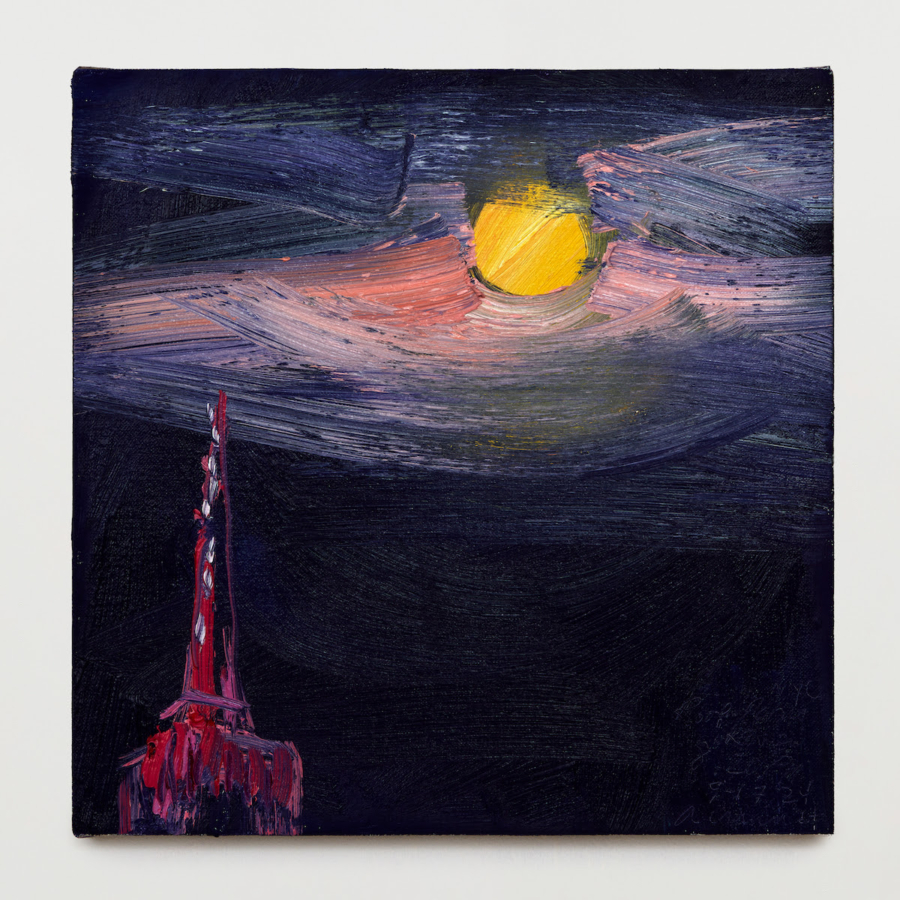Gertrude Abercrombie, published by Karma, New York, 2018.
Download as PDF
View Gertrude Abercrombie here
For Gertrude, objects contained life, emotion, process. She attempted to hold on to time by crystallizing it in things. Every surface in her house was covered with assorted juxtapositions of antique rarities, mysterious found fragments, mechanical devices long obsolete, or commonplace items encapsulating a treasured moment with a friend; she revered the past and kept its material remains with her. In her paintings, the houses, pieces of furniture and china, and trees and animals are often identifiable symbols, pieces of her life itself, its inhabitants and events. Throughout my childhood, the land of the Oz books paralleled Gertrude’s rich environment; both were populated with highly individualized characters, and in both magical happenings were considered normal, even necessary entertainments. Not until recently have I understood that my particular fascination with one of Oz’s magicians—the Gnome King, who maliciously transformed his erring subjects into china bric-a-brac—was due to my unconscious perception that Gertrude, for a different motive, performed similar transubstantiations in her paintings.
Several of the paintings of the 1940s depict major autobiographical events. In Strange Shadows (Shadow and Substance), for example, she stands with her second husband, represented by the white pedestal; shadows of herself and her past husband, the bare tree, are reflected on the wall. The clock in the foreground points to 11:28, the moment of my birth, showing that I stayed with her after the divorce. (The owl, in the past a shadow on my father’s outstretched arm and at present in the foreground along with the three of us, could in this instance represent the house which my father gave her.) In Return to Living, painted the year before I was born, she is flagging down my father, in a sperm-like parachute, to a cozy picnic by a uterine lagoon. (One wonders at the meaning of the ominous tree standing between them.) In several paintings a white rock represents her ancestral house in Aledo, Illinois. In Dinah Enters the Landscape, she carries me from this house and from our predecessors, the clump of trees, across the bridge to her present life, with her many friends, the larger trees, and to my father, the black cat. In two paintings (of which I do not have photos) my father is depicted as a white horse. In the first, painted at the beginning of their marriage, she leads the horse on a rope back home to the white rock; in the later one, dating from the time of their divorce, the horse is rearing and kicking at her, resisting her peacefully offered hand, and is now tied to a white tree, my future stepmother. On giving this painting to my father’s brother as his wedding present, Gertrude confessed that the white horse was, in fact, my father. This is only known instance of her having admitted to any conscious symbolism in her paintings.
Many paintings are simple self-portraits, including (as Susan Weininger pointed out to me) The Tree at Aledo; I am certain, from the mood, that in Lighthouse, Whale and Black Sea, she is the whale, spouting at her mate, the lighthouse; and in another painting (the only other one of me) she is clearly the blue ball, watching and controlling the tentative toddler. A painting that she gave to her parents displays her paternal lineage: the two large clouds represent her grandparents and the five small clouds their children; the two white horses in the foreground with the recurrent white rock are her parents, each standing near trees representing their respective siblings (the one bare tree being her aunt, the “first” Gertrude Abercrombie, who died in childhood); Gertrude strolls from a square red-brick building, a simplification of the apartment building in Chicago where she grew up. A similar painting showing my father’s “family tree” was dutifully given to his parents.
Of course, many of the paintings contain no discernible personal symbolism but are merely straightforward renderings of admired objects (such as the antique phonograph or the slaughterhouse at Aledo), archetypal symbols (such as the pyramid or the ostrich egg), or graceful, carefully balanced interior scenes suggesting the festivity of her parties and the intricacy of her friendships. Always, however, emotional significance is contained in static arranged objects, the most central of which is usually herself.
In the 1950s, her paintings were lighter in tone and less symbolic in content, the gloomy dark greens and blacks clearing to the cheery pinks and pale grays of her second marriage. These paintings are happier, but also more superficial, displaying more trivial concerns, more casual social engagements. She often expressed her dissatisfaction with these subjects, such as the shells and drapery and the rows of doors (much admired by others); these seem to me like blinds covering over her inner source of expression: she had little to say then, when her life glided easily from party to party, a long recycling jazz ballad.
Very few paintings manifested during the 1960s, as Gertrude’s health declined, but in the examples that reach us we see her familiar subjects (antiques, shells, etc) in new, more magical scenes; there is a reemergence of deeper self-expression, a rejuvenation of her sense of humor and mystery, a more concentrated translation of more universal meanings into the objects, and we wish that more of her story-embodying images could have been set down.
Originally written for Gertrude Abercrombie, Illinois State Museum, 1991.
Published on the occasion of
Gertrude Abercrombie
August 9–September 16, 2018
Karma
188 East 2nd Street
New York, NY 10009
Organized with Dan Nadel
Published by
Karma Books, New York
Edition of 1,000


